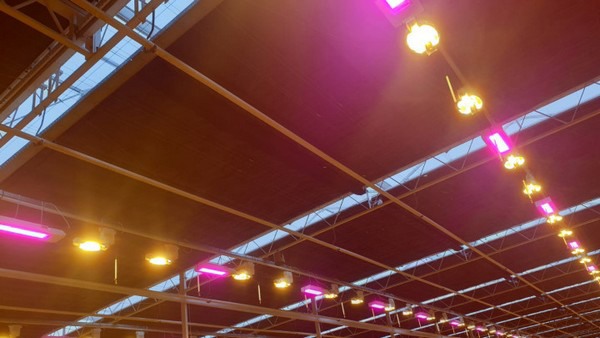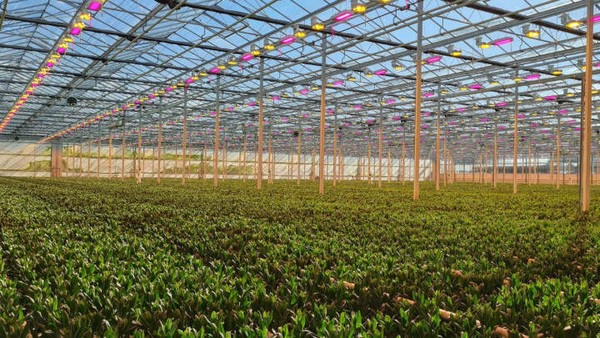Signify will provide grower SenZaro with a higher light level by means of a hybrid installation with the recently introduced Philips GreenPower LED toplighting Force in October. During the previous winter, a 3.36 ha greenhouse was already adapted for the growth of lisianthus, in which the Dutch company wanted to expand. To achieve this, extra HPS lighting and Philips GreenPower LED toplighting compact were installed. This increased the total light level to more than 400 µmol/s/m2.
A PAR level of 400 µmol/s/m2 seems to be the new norm within lisianthus cultivation. As a producer for the top segment of the market, grower Michael Zwinkels does not want to fall behind a few colleagues who have recently preceded him. In close consultation with account manager Wilco Verkuil from Signify and installer Stolze, an efficient lighting design was made for the upgrade.

Upcoming adjustments with TLF
The current HPS installation supplies 300 µmol/s/m2. A third of the lights will be replaced by the Philips GreenPower toplighting Force grow lights this autumn. These grow lights have an output of 3600 µmol/s, boosting the light level to 400 µmol/s/m2, without further technical adjustments or increased energy usage.
The toplighting Force is available in two beam widths: a wide beam giving uniformity in relatively low greenhouses or with little distance to the crop, and a standard beam offering optimal yield in higher greenhouses. Zwinkels chooses this last option, offering an efficiency of 3,5 µmol/J. “Thanks to the higher output less lights are needed.” Zwinkels adds. “That lowers the costs of the installation a bit.”

Experiences with TLC
In the adjusted chrysanthemum greenhouse, the first growth of lisianthus under the new lighting regime has now taken place. The grower is happy with the results. "The branches have more buds and are really a lot heavier," he says. "That's what it was all about for me because I grow for the top segment of the market and see great prospects in lisianthus of a heavier, and therefore of a higher, quality. More light was wanted, and I certainly didn't want more radiant heat. That makes LED the best option to increase weight."
Signify
